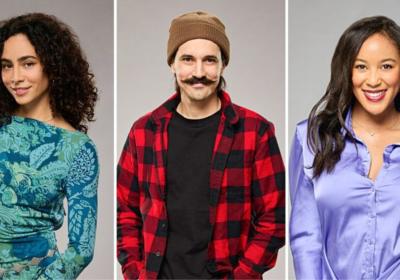
'When America catches a cold, Black people get pneumonia'
"When America catches a cold, Black people get pneumonia."
That was the message from Dr. John Queener, one of four African-American health professionals who headlined the Cleveland State-hosted webinar, Feb. 9, on the State of Black Health and Well-Being in America.
Their core message was that much more needs to be done to bring equity to marginalized communities, especially the Black and brown communities, and that COVID-19 has only amplified while bringing to light the disparities.
Convenor of the webinar was Dr. Phillip “Flapp'' Cockrell, who makes sure to stay on the phone with his parents’ doctors during each of their monthly check-ups. The doctors see no problem with Cockrell doing this for his parents’ sake, because elderly patients can often misinterpret new medical plans suggested to them.
Old age may be one of the main reasons for confusion when it comes to visiting a local doctor, but one other condition may play an even larger role in terms of effectively communicating.
Not only does Dr. Cockrell choose to make time for translating what his parents may not understand to them, but he also informs their doctors about how they could provide more clarity.
Cockrell brought together the panel with the support of Cleveland State's Black Studies department. Through an hour-long discussion about the challenges that Black and brown communities have met during the Coronavirus pandemic, Cockrell and the other panelists emphasized the importance of preparing health workers for diversity in the American healthcare system.
Dr. Cockrell opened the webinar with a moment of silence for the more than 900,000 Americans who have lost their lives to the coronavirus pandemic.
The other panelists were Dr. John Queener, Professor of Counseling and Psychology at the University of Akron, Katherine Myles, CSU Acting Director of Clinical Operations and Dr. Sherdene Simpson, CSU Visiting Assistant Professor of Counseling.
Triggering topics
Some of the “triggering topics,” as described by Cockrell, included points about racial disparities in healthcare, distrust for non-Black health workers, cultural competence and systemic isomorphism.
Systemic isomorphism, which Dr. Sheradene Simpson spent a bit of her time speaking about, refers to the inherited health patterns, values and morals that may be passed down through each generation within families.
The speakers in the webinar provided insight on how positive cases in Black and brown communities have rapidly increased more so than others.
Visible health troubles are not the only aspects taking a toll on Black and brown communities.
Issues with mental health have also rapidly increased, seemingly as a result of pandemic isolation and other points of protocol.
Crockell pulled information from the CDC regarding the numbers of COVID positive cases in the Black and brown communities, as opposed to white and non-hispanic counterparts.
The number of cases were as much as 1x more frequent, hospitalizations 2.5x more frequent and 1.7x more deaths in the Black community among other populations.
“Of course, we have seen an increase in suicide rates among a number of different populations,” Crockell said. “Boys and young adults between the ages of 10 and 24, members of our LGBTQ+ population who are youth, African American students and Latines students are the four groups leading in suicide rates.”
Myles’ description of Black health and well-being in America came from a place of compassion due to her personal studies.
“In my opinion, it (COVID-19) has really revealed and amplified the social and economic factors that have contributed to poor health outcomes,” Myles said based on her experience working in the nursing industry. "As Black people we are at higher risk for serious complications when coming in contact with COVID. This is due to a number of common comorbidities such as high blood pressure, diabetes or asthma.”
Dr. Queener added historical perspective. The opening quote is from his grandmother.
Queener said, “how any Black folks at all are still in their right minds, given what our race has endured and how it has been transmitted across generations.”
Queener explained that he was referring to the social, economic and health related difficulties that generations of subhuman-treatment can create for an entire population. He added that COVID-19 has played a major role in pointing out these challenges.
Queener spoke about how his Akron-based organization, Minority Behavioral Health group (MBHG), works to provide some of the Black citizens where he lives find some relief in facing these challenges.
"The mission of Minority Behavioral Health Group is to reduce mental health disparities of African Americans and other underrepresented populations in Summit County," said Queener, one of the group's founders
Dr. Simpson, emphasized the importance that she finds in preparing her psychology and counseling students for an increasingly diverse population of patients.
Social determinants of health were a large part of Simpson’s presentation. She said that variables ranging from education to polluted air and water have impacted the directions of each ethnicity's route to better health.
She added that In Black communities in America, instances of accessibility have always been short-lived.
Myles followed up on Simpson's theme, focusing on access to significant healthcare in Black communities.
“Prior to the pandemic, there were challenges to the Black community in having sufficient healthcare,” Myles said. “The pandemic further presented that gaining sufficient healthcare in our community is a big challenge. Some reasons could be job choice, lack of insurance and other inequities must be worked on.”
Myles noted that some organizations do offer more opportunities to have services covered, based on income. Unfortunately, problems are not always about economic issues alone, but come from stigma in communities about diverse populations.
Queener noted an historic distrust among Black people of traditional and government healthcare provision. He said institutions such as the Black church are culturally relevant to people of Black communities in breaking such stigmas.
Aside from teaching from a culturally-competent perspective, spaces that are relevant to individuals of certain ethnic backgrounds are available to provide direct services in helping those in need.
The panelists said universities could do more to provide diversity studies to students in health-related programs. If these studies are made available, they can play a large role in strengthening diversity in a community's medical relations.
They concluded that spending time learning about different stigmas and treatments that are culturally significant should help advance the next generation of scholars to work with the utmost cultural competence.




